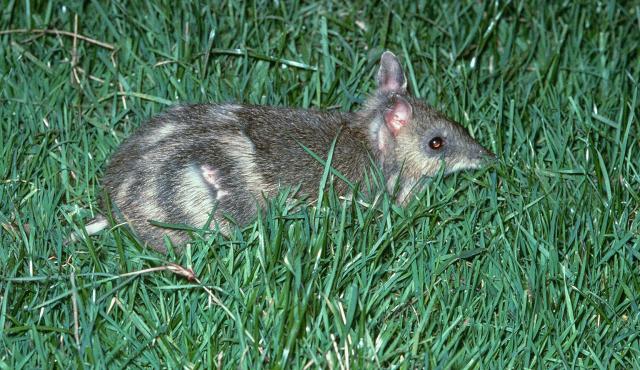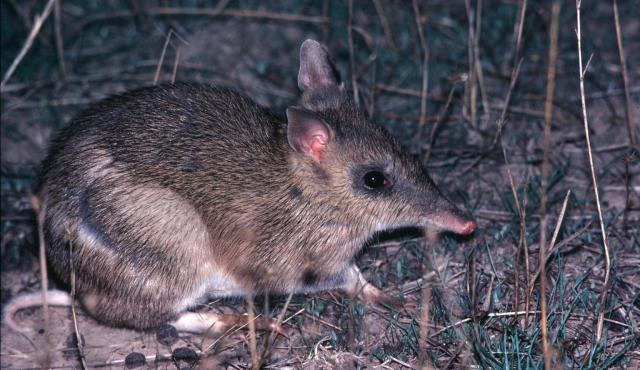A range of teacher professional learning programs will be developed to accompany the Biodiversity of the Western Volcanic Plains online outreach...




Eastern Barred Bandicoot (Mainland)
Perameles gunnii
Active at night. Can breed throughout the year, but mostly between July to November. Pregnancy lasts just 12 days, so they can produce up to five litters of young per year, with an average litter size of two. Can breed after 4 months of age. Average lifespan is 18 months to 2 years. Males need 13-20 hectares while females need 2-3 hectares.
| Details | Description |
| Type | Mammal |
| Group | Marsupial |
| Other Common Names | Tasmanian Barred Bandicoot |
| Identifying Characteristics | |
| Distinctive Markings | White stripes on rear of back, short white tail, long nose. |
| Diet | Omnivore. Small invertebrates including worms, beetles, crickets, moths, cicadas and caterpillars. Plant bulbs and tubers including the Plains Yam Daisy, fruits and fungi. |
| Habitat | Natural habitat is tall, dense native grasslands and grassy woodlands, although they can live in modified habitats if there is suitable shelter and control of predators such as cats and foxes. |
| Native Status | Native to Australia. Once widespread across western Victoria. |
| Taxonomy | |
| Phylum | Chordata |
| Class | Mammalia |
| Order | Peramelemorphia |
| Family | Peramelidae |
| Genus | Perameles |
| Species | gunnii |

Distribution maps indicate current and historic locations where species have been sighted.
Source: Atlas of Living Australia
| Conservation Status | |
| DEPI Advisory List | Extinct in the Wild |
| FFG Act | Listed as threatened |
| EPBC Act | Endangered |
| FFG Action Statement |
The conservation status of species is listed within Victoria and Australia.
The Department of Environment and Primary Industry (DEPI) Advisory List consists of non-statutory advisory lists of rare or threatened flora and fauna within Victoria.
The Flora and Fauna Guarantee Act 1988 (FFG Act) lists threatened species in Victoria. Under the Act, an Action Statement is produced for each listed species.
The Environment Protection and Biodiversity Conservation Act 1999 (EPBC Act) is the Australian Government’s key piece of environmental legislation, listing nationally threatened native species and ecological communities.



